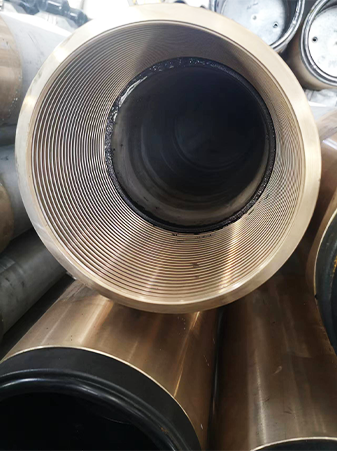- Afrikaans
- Albanian
- Amharic
- Arabic
- Armenian
- Azerbaijani
- Basque
- Belarusian
- Bengali
- Bosnian
- Bulgarian
- Catalan
- Cebuano
- Corsican
- Croatian
- Czech
- Danish
- Dutch
- English
- Esperanto
- Estonian
- Finnish
- French
- Frisian
- Galician
- Georgian
- German
- Greek
- Gujarati
- Haitian Creole
- hausa
- hawaiian
- Hebrew
- Hindi
- Miao
- Hungarian
- Icelandic
- igbo
- Indonesian
- irish
- Italian
- Japanese
- Javanese
- Kannada
- kazakh
- Khmer
- Rwandese
- Korean
- Kurdish
- Kyrgyz
- Lao
- Latin
- Latvian
- Lithuanian
- Luxembourgish
- Macedonian
- Malgashi
- Malay
- Malayalam
- Maltese
- Maori
- Marathi
- Mongolian
- Myanmar
- Nepali
- Norwegian
- Norwegian
- Occitan
- Pashto
- Persian
- Polish
- Portuguese
- Punjabi
- Romanian
- Russian
- Samoan
- Scottish Gaelic
- Serbian
- Sesotho
- Shona
- Sindhi
- Sinhala
- Slovak
- Slovenian
- Somali
- Spanish
- Sundanese
- Swahili
- Swedish
- Tagalog
- Tajik
- Tamil
- Tatar
- Telugu
- Thai
- Turkish
- Turkmen
- Ukrainian
- Urdu
- Uighur
- Uzbek
- Vietnamese
- Welsh
- Bantu
- Yiddish
- Yoruba
- Zulu
compression tubing coupler
Exploring Compression Tubing Couplers A Key Component in Fluid Systems
In the realm of fluid handling and pneumatic systems, every component plays a pivotal role in ensuring efficiency and reliability. Among these components, compression tubing couplers stand out as essential connectors that facilitate the seamless transition of fluids between pipes, tubes, and other fittings. This article delves into the significance, functionality, and key considerations regarding compression tubing couplers.
Understanding Compression Tubing Couplers
Compression tubing couplers are mechanical fittings designed to connect two sections of tubing or pipe. They secure the tubes tightly together, creating a leak-free seal that withstands pressure and prevents fluid loss. Usually made from durable materials such as stainless steel, brass, or plastic, these couplers come in various sizes and configurations to meet the demands of different applications.
The operation of a compression coupler is straightforward. It employs a ferrule—a ring-like device—that compresses against the tubing when the nut is tightened. This action creates a tight seal, allowing fluids to flow smoothly while minimizing the risk of leaks. This mechanism is particularly beneficial in industries where precise fluid transfer is critical, such as chemical processing, pharmaceuticals, and food and beverage manufacturing.
Benefits of Using Compression Tubing Couplers
1. Leak Prevention One of the foremost advantages of compression tubing couplers is their ability to produce a tight seal that effectively prevents leaks. This characteristic is crucial in applications where even minor leaks can lead to significant losses or hazardous situations.
2. Ease of Installation Unlike other types of fittings that may require specialized tools or extensive training for installation, compression couplers are relatively easy to install. Most applications allow for hand-tightening, simplifying the process and reducing labor costs.
3. Versatility Compression tubing couplers are compatible with various types of tubing materials, including plastic, copper, and rubber. This versatility makes them suitable for a wide array of applications, from gardening to industrial manufacturing.
compression tubing coupler

4. Adjustability Compression couplers provide the flexibility to adjust or disconnect tubing sections without needing to cut the pipes. This adjustability is especially advantageous during maintenance or system modifications.
5. Durability Built to withstand significant pressure and environmental conditions, compression couplers are designed for longevity. Their robust construction minimizes the frequency of replacements, enhancing overall system reliability.
Key Considerations When Choosing Compression Tubing Couplers
When selecting compression tubing couplers, several factors should be taken into account
- Material Compatibility Ensure that the coupler material is compatible with the fluid being transported to avoid corrosion or degradation. - Size and Compatibility Always verify that the coupler size matches the tubing diameter to guarantee a proper fit.
- Pressure Ratings Assess the pressure requirements of your application. Choose couplers rated for the necessary pressure levels to ensure safety and efficiency.
Conclusion
Compression tubing couplers are integral to various fluid handling systems across multiple industries. Their reliability, ease of use, and versatility make them a preferred choice for professionals seeking effective fluid connection solutions. As technology advances and industries evolve, the demand for these couplers will likely continue to grow, underscoring their importance in modern engineering and manufacturing processes. Understanding their features and applications enables better decisions, leading to more efficient and safer systems.
-
Tubing Pup Joints: Essential Components for Oil and Gas OperationsNewsJul.10,2025
-
Pup Joints: Essential Components for Reliable Drilling OperationsNewsJul.10,2025
-
Pipe Couplings: Connecting Your World EfficientlyNewsJul.10,2025
-
Mastering Oilfield Operations with Quality Tubing and CasingNewsJul.10,2025
-
High-Quality Casing Couplings for Every NeedNewsJul.10,2025
-
Boost Your Drilling Efficiency with Premium Crossover Tools & Seating NipplesNewsJul.10,2025







